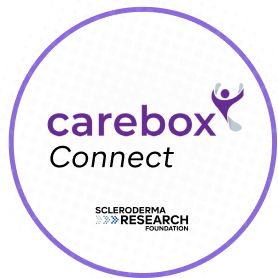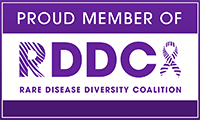![]()
Whether you’re interested in enrolling in a clinical trial for scleroderma or just want to learn more, this will help you get started.
What are clinical trials?
Clinical trials are research studies designed to test new treatments or approaches by comparing them with the standard treatments available today. These studies often involve new drugs, drug combinations, or alternative methods of delivering existing therapies. Clinical trials may focus on various stages of scleroderma treatment, including early detection, slowing progression, reducing side effects, and improving quality of life. All clinical trials must follow strict rules set by the U.S. Food and Drug Administration.
Why are clinical trials for scleroderma important?
Clinical trials are essential for developing new and effective scleroderma treatments. All current scleroderma therapies are the result of clinical trials, which are the only way to determine if a new drug or treatment works better than the existing standard of care. For patients, scleroderma clinical trials provide access to investigational treatments that may not yet be available to the general public, offering additional options for those seeking alternative therapies.
How safe are clinical trials?
Clinical trials, like any medical procedure, carry some risks. However, they are carefully designed to prioritize patient safety. Before a trial begins, the treatment being tested has already undergone years of research and shown promising results.
All clinical trial participants are guaranteed to receive the current standard of care, while some will also receive the new treatment to determine if it improves their condition. Your provider will explain the trial in detail, including its risks and potential benefits, so you can make an informed decision. Participation is voluntary, and you can choose to leave the trial at any time if you change your mind.
When should I start thinking about clinical trials?
Clinical trials should be considered early in your treatment planning, ideally soon after receiving your scleroderma diagnosis. You don’t need to wait until your condition has advanced or other options have been exhausted. This is because some trials are specifically designed for newly diagnosed patients. If your doctor doesn’t mention clinical trials, you can bring them up yourself to explore all available options.
Who can participate in clinical trials?
Eligibility for clinical trials depends on several factors, including the type and stage of your disease, your age, gender, race, and previous treatments. Each trial has specific criteria to ensure that participants fit the study’s goals and can help researchers get meaningful results.
How does participating in a clinical trial affect my regular healthcare?
The relationship between your regular healthcare and a clinical trial will depend on factors such as the study design, your medical condition, and any treatments you are already receiving. The trial may include procedures or tests that overlap with your regular care, while others may be study-specific, and will be given in addition to your regular care.
Communication is key to ensuring everything between your regular healthcare team and the trial team is well-coordinated. By working with both teams, you can ensure you continue receiving the standard of care for your overall health while participating in the trial.
Does joining a clinical trial mean I'll be treated like an experiment?
Before any treatment reaches the stage of a clinical trial, it has gone through years of rigorous research and testing. Often, a trial may even be examining a drug already proven effective in other conditions.
Participants in clinical trials receive a high standard of care and attention, often with increased access to doctors and nurses to discuss any questions or concerns. You’ll also be closely monitored with additional tests to track your health and progress.
During a trial, participants continue to receive at least the current standard of care for their specific condition, with the potential to receive an investigational treatment that could be beneficial.
Can I leave a clinical trial early?
Yes, you can leave a clinical trial at any time. Participation in a clinical trial is always completely voluntary, and you have the right to withdraw for any reason without penalty or loss of access to your regular medical care.
The decision to stay in or leave a clinical trial is always yours to make. Your safety and autonomy remain a priority throughout the study.
How are side effects treated in clinical trials?
All drugs have side effects. When drugs are being studied in clinical trials, some of these side effects are expected based on previous trials or have been seen with the use of similar medications. But some side effects might not be known and can emerge during the trial. Side effects can be unpleasant, serious, or even life-threatening. Because of this, clinical trials have safety plans and safeguards included in their trial designs to ensure that participant safety is prioritized and closely monitored throughout the trial period.
Trial participants are encouraged to report any side effects they experience as soon as possible to their trial team, and they are asked about side effects at every clinic visit. The trial team will work to treat any side effects a participant experiences and determine whether these side effects are related to the study drug and what actions need to be taken (such as interrupting or stopping the study treatment, among others).
Will my treatment costs be covered?
In most cases, the study treatment is provided at no cost to participants. Any special procedures or tests done exclusively for the trial, such as additional lab work, are typically funded by the trial organizers. Other aspects of your care, like standard medical expenses, are handled as they would be if you weren’t part of a trial.
Many study centers also have financial navigators or social workers available who can help answer questions, provide guidance, and connect you with resources that may ease financial concerns.
Why do some clinical trials have narrow focuses?
The goal of all clinical trials is to be as inclusive as possible. However, it is necessary to develop specific inclusion and exclusion criteria. The reason for this is to ensure that the study is valid—so that the study can determine if an experimental medication can safely and effectively treat a disease, such as scleroderma.
In most clinical trials, some patients receive an active medication, while other patients receive a matching placebo. The inclusion and exclusion criteria are used to ensure that these two groups of patients in the trial are similar. This way, any differences in disease outcomes observed during the trial are truly due to the experimental medication.
By focusing on a specific group of patients, researchers can:
- Ensure Safety: Specific criteria help protect participants by minimizing risks and ensuring the experimental medication is tested on those most likely to benefit.
- Increase Accuracy: A well-defined patient population helps researchers clearly understand the effects of the experimental medication, leading to more reliable and meaningful results.
- Improve Outcomes: Focused trials can lead to quicker and more definitive conclusions, accelerating the development of potential treatments for specific conditions.
How do clinical trials for scleroderma measure the duration of a disease?
In clinical trials, the length of time an individual has experienced active symptoms is an important factor in determining eligibility. For many conditions, the active phase is measured from the onset of the first noticeable symptom. This helps researchers understand how far the disease has progressed and whether a patient fits the study criteria.
For example, individuals with a scleroderma diagnosis of less than or equal to 5 years from the first non-Raynaud’s symptom may be eligible for specific trials like CONQUEST. If a person is uncertain about when their first symptom occurred, the trial investigator can help by reviewing the patient’s history with their physician as part of the screening process.
What are the different phases of clinical trials?
Phase 1: In Phase 1 trials, new drugs or treatments are tested in a small group of people for the first time. The main goal is to evaluate safety, determine optimal dosage, and identify any potential side effects. These trials typically involve 20-100 participants, often healthy volunteers, to avoid confusing side effects with symptoms of an illness. Sometimes, people with the disease may also be included if the treatment is specifically targeted.
Phase 2: Once a drug passes the safety tests in Phase 1, it moves to Phase 2, where it is given to a larger group of participants (usually 100-300). The goal is to see how well the drug works for a specific disease or condition, while continuing to monitor its safety and side effects. Phase 2 trials help researchers fine-tune the dosage and gather more information about how the drug affects people with the condition it’s meant to treat.
Phase 3: If a drug shows promise in Phase 2, it moves on to Phase 3, which can involve hundreds or even thousands of participants across several study sites. These complex trials compare the new treatment to the standard of care or a placebo to determine how effective it is in treating the disease. Phase 3 trials often use randomization, meaning participants are randomly assigned to receive either the new treatment or a standard one. The research team doesn’t know who gets which, ensuring unbiased results. Phase 3 results provide the critical data needed for FDA approval.
Phase 4: After a drug is approved by the FDA and made available to the public, Phase 4 trials continue to monitor its performance. These studies help identify any long-term side effects, additional benefits, or differences in how the drug works for specific groups of people. Phase 4 trials may involve new participants or review data from those already taking the drug, ensuring ongoing safety and effectiveness for the broader population.
This information was sourced from the Mayo Clinic and Johns Hopkins Bloomberg School of Public Health.
Explore Clinical Trials
SRF Carebox Connect
Discover clinical trials that are appropriate for you through SRF Carebox Connect.
Additional Resources
Access helpful tools and information to guide you through the clinical trial process.
SRF PLATFORM CLINICAL TRIAL
You could play a role in driving scleroderma research through CONQUEST.
Learn more about CONQUEST, a platform clinical trial focused on systemic sclerosis-associated interstitial lung disease (SSc-ILD). If you are eligible to participate, you could help advance research and contribute to discovering potential new treatment options for SSc-ILD.



